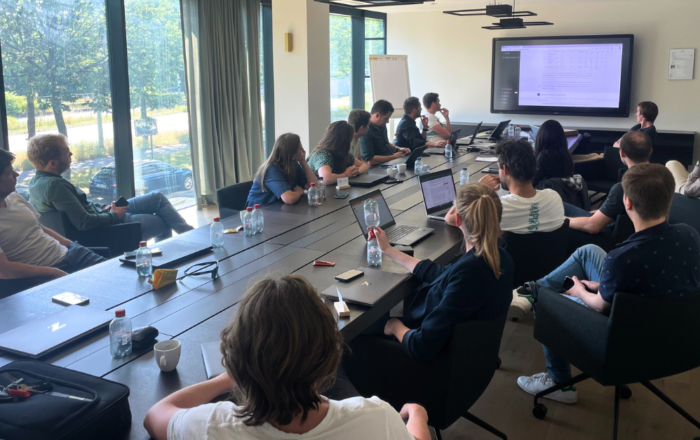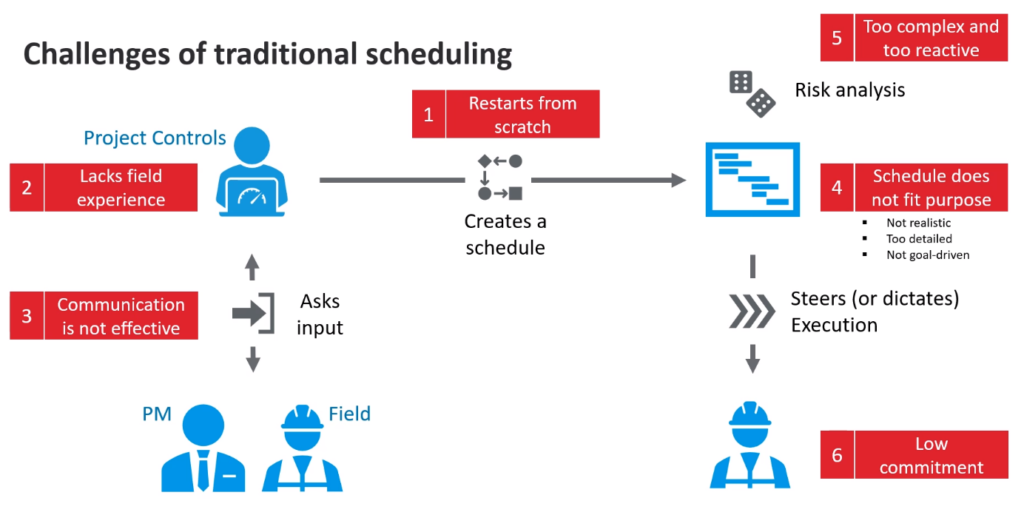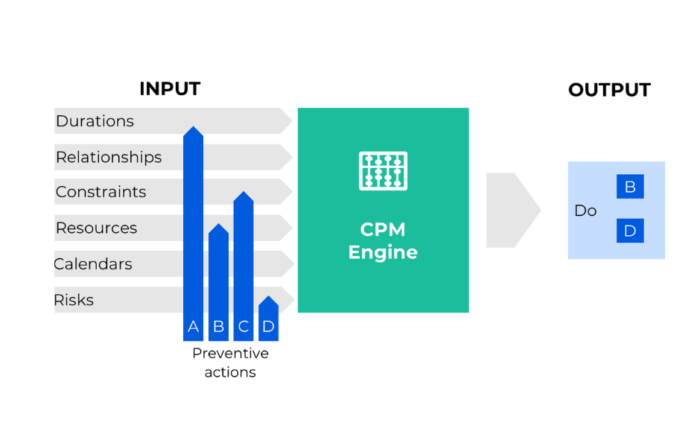
6 Reasons why we love InEight Schedule


In this blog post we will summarize the main challenges in scheduling and how InEight schedule is designed to solve these.
6 Main challenges of traditional scheduling
Scheduling has come a long way and evolved into what we see today. In his latest blog post about field-disconnection, Stijn Van de Vonder explained what is going wrong in traditional construction planning and why there’s often a disconnect with the actual work in the field on site. However, we can break it down to the following:
- When a new project kicks-off, planning engineers tend to start from scratch. Thus, ignoring experience from past projects which makes producing a schedule often very time-consuming.
- Project controls engineers are often young professionals with excellent analytical capabilities, but lack field experience to create realistic schedules.
- Planning requires expert input, but communication between project controls and field experts is often not done effectively as they seem to speak a different language.
- Resulting schedules are not fit for purpose. They are often too optimistic, less-goal driven, or do not contain the right level of detail.
- Taking risks into account when scheduling is a good practice, but the typical Monte Carlo analysis requires expert skills. It’s very complex and too reactive to serve its cause. It only calculates the robustness of a schedule after the schedule has been built.
- As the schedule is not realistic, the field shows low commitment to the schedule. The schedule becomes merely a contractual obligation, more than it’s been used to steer the execution.

Do you feel the same pain that we do? A need to rethink traditional scheduling was identified and acted upon by the founder of InEight Schedule, formerly known as BASIS, Dr. Dan Patterson, that drove him to develop this highly innovative tool.

As professionals in planning we sometimes need to look in the mirror and accept that the way we traditionally schedule can/should be improved. We have discovered a tool, InEight Schedule, that is really disruptive in its approach to scheduling and offers a real fresh view.
Solving those 6 challenges through smart technology
We perceive InEight Schedule as a knowledge system that supports data-driven project management. It enhances decision making by using advanced analytics and artificial intelligence (AI). The knowledge system consists of three main components:
1. Augmented Intelligence (AI):
The augmented intelligence component gives smart suggestions to the user based on historical data and smart machine learning.
- We do no longer have to start from scratch (challenge 1) as templates, historical subnets, successors, and possible risks are suggested by the tool. This means that creating a new schedule can be done much more effectively than before.
- Planning engineers can benchmark their durations based on historical data for example durations and productivity rates (challenge 2).
2. Human Intelligence (HI):
The tool is not based on magic, but more on collaboration and consensus.
- The markup functionality is a workflow that allows the user to ask and capture expert opinion in the tool (challenge 3).
- The planning engineer receives and assesses input from the project team which needs to be incorporated in the schedule and guide his/her estimates to be more realistic (challenge 4).
3. Advanced Project Controls Techniques:
It combines the previous two components with best practice, but re-invented project controls techniques like Critical Path Method scheduling, resource loading, risk analysis, and LEAN scheduling.
- The risk analysis technique, for example, adjusts the schedule for risk during the scheduling process (challenge 5). It enables the user to view the various P-value schedules live throughout the scheduling process and generates distribution and tornado graphs on each level of the schedule.
- By adding short interval planning to the toolset, team members in the field can do their own planning by adding blocks of work within the scheduled activity time frame. This results in increased team commitment (challenge 6).
Conclusion
InEight Schedule helps prevent planning engineers from re-inventing the wheel over and over again by giving smart suggestions and providing historical templates, and historical data. With InEight schedule, planning is not a one-man-show. It facilitates the collaboration between project controls engineers and experts in the field. The result of those two is a more realistic schedule, that increases commitment from the entire team. It solves the typical field disconnect.
Curious to see the tool in action? Check-out the InEight Webinar to a full functionality demo of InEight Schedule.




